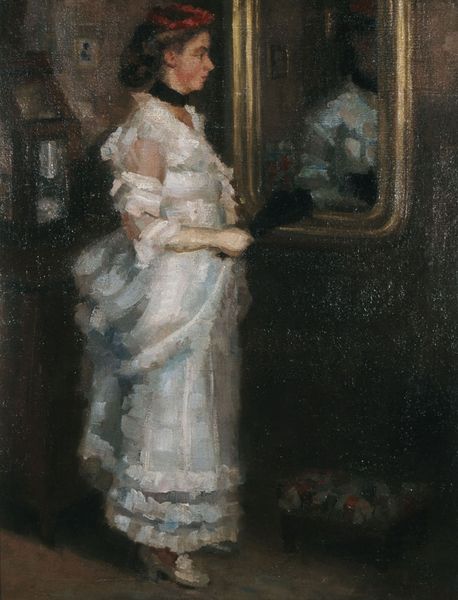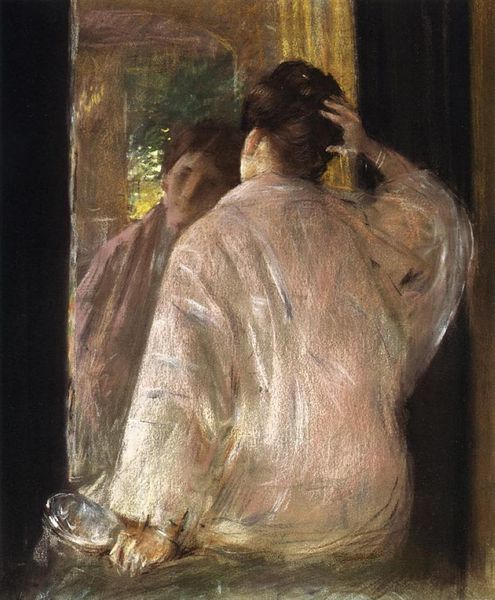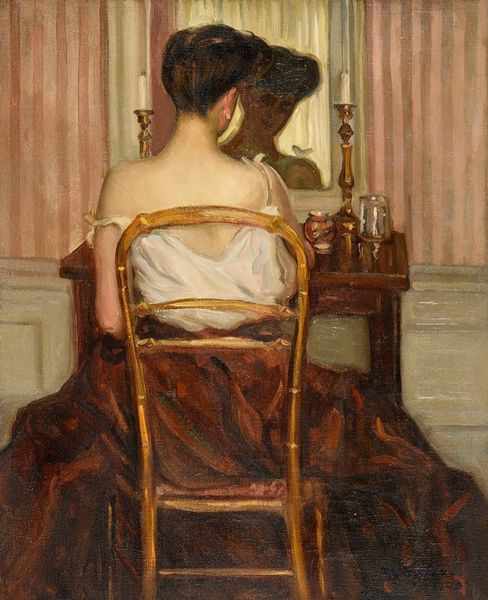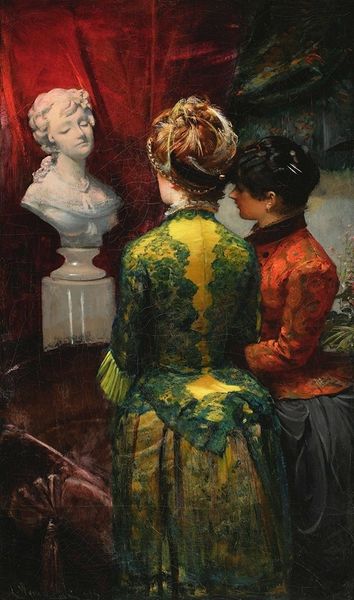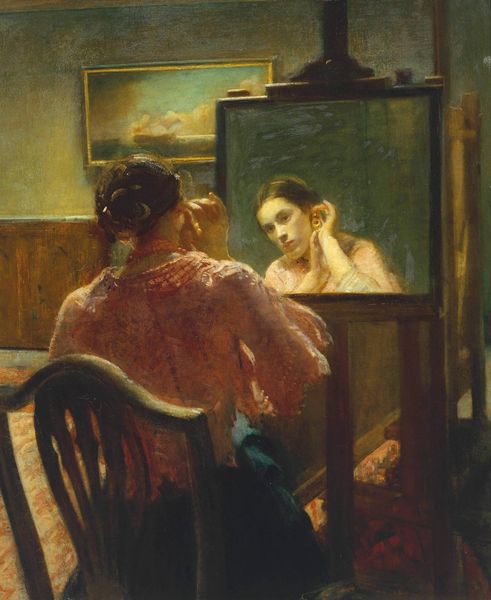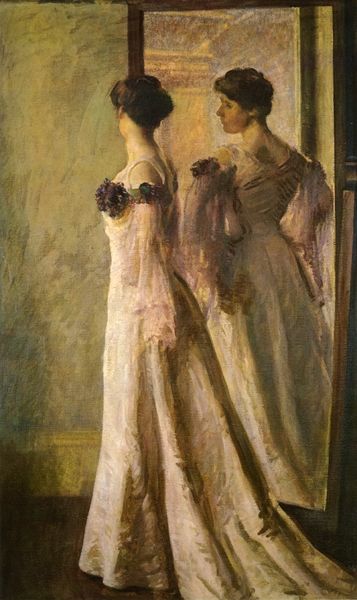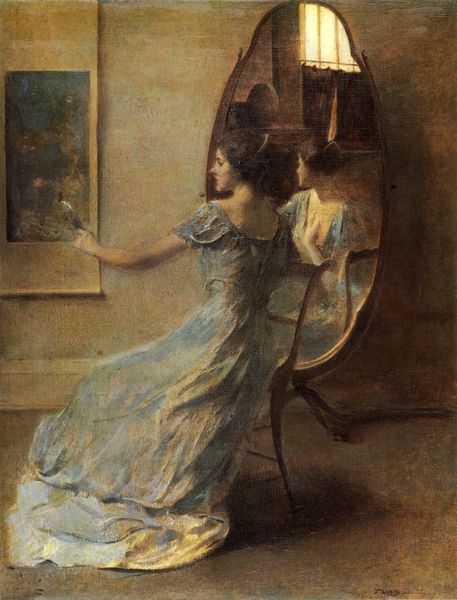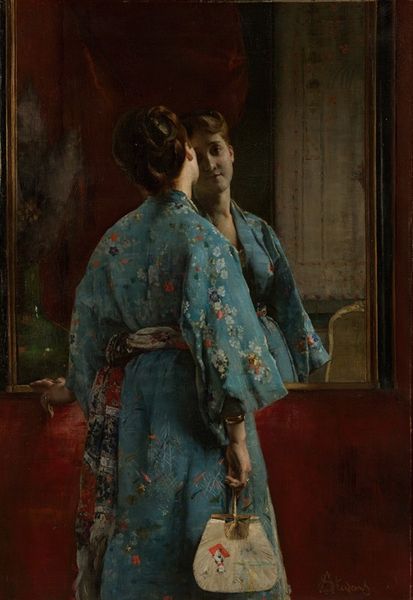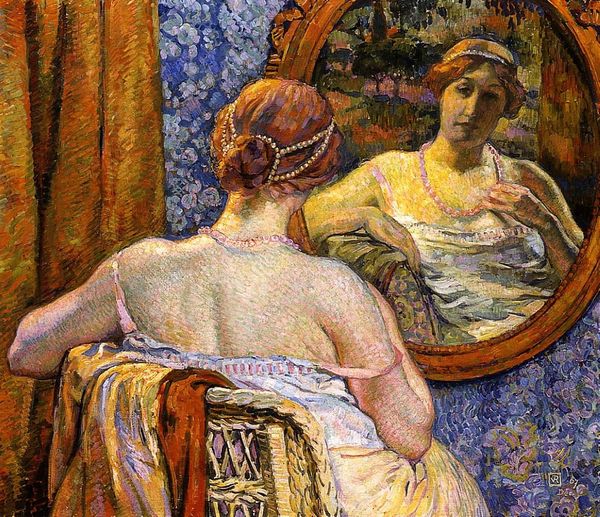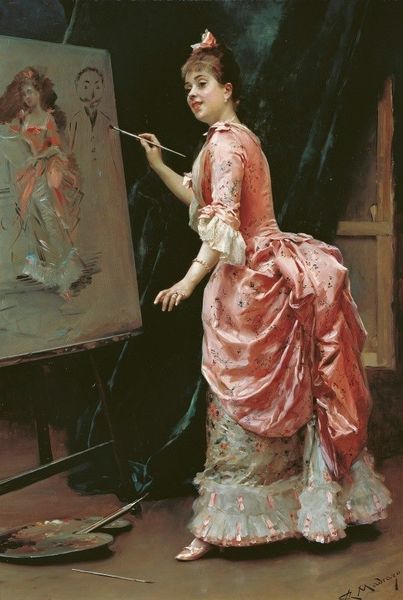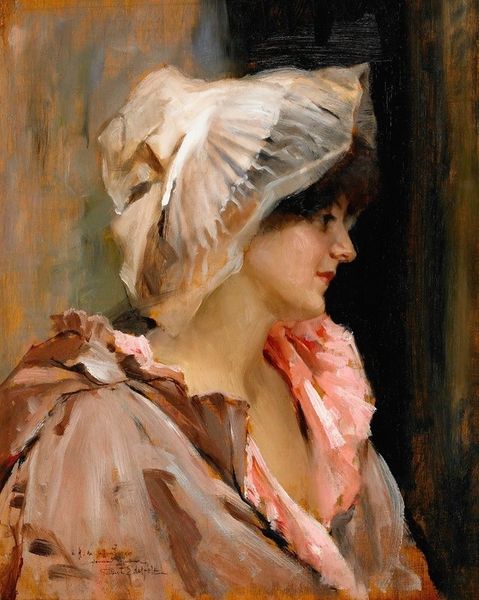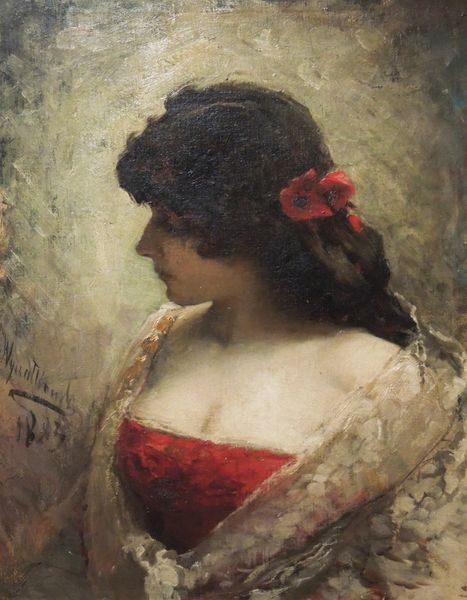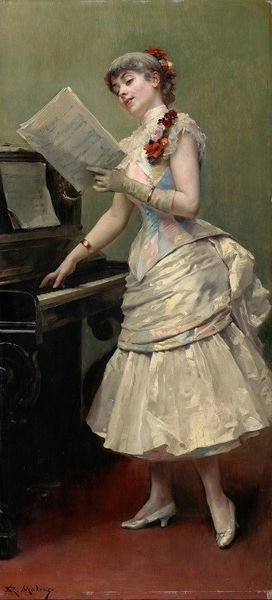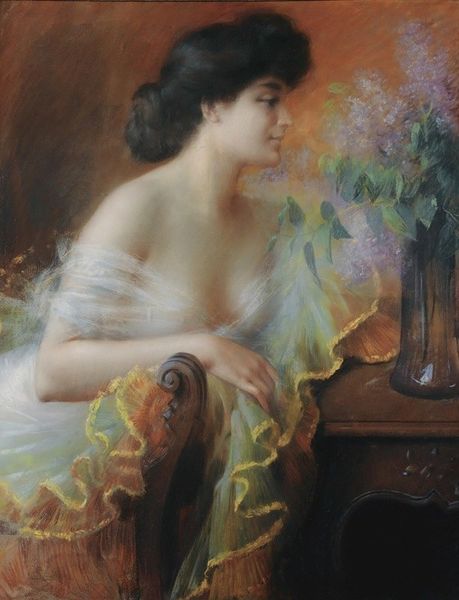
Copyright: Public domain
Editor: Thomas Anshutz's "A Passing Glance," painted around 1900 using oil paint, depicts a woman looking at herself in a mirror. There's something really intimate about it, like we're intruding on a private moment of reflection. What's your interpretation of this work? Curator: It's interesting that you see it as intimate. I agree, but I also think it prompts questions about the construction of female identity and the male gaze. Anshutz, a male artist, is representing a woman viewing herself, which creates layers of interpretation. How complicit is he in the objectification he’s ostensibly observing? Does the soft, impressionistic style mitigate that tension, or heighten it? Editor: I hadn't considered it in terms of the male gaze. So, you're saying the act of a male artist painting a woman looking at herself becomes inherently political? Curator: In many ways, yes. The history of art is rife with depictions of women seen through a male lens. When a woman is depicted looking at herself, it opens up questions of agency. Is she truly seeing herself, or is she seeing a reflection of societal expectations and ideals imposed upon her? Does the painting serve to celebrate or critique this dynamic? Editor: That makes me think about how much context influences our viewing experience. A painting like this might have been read completely differently a hundred years ago. Curator: Exactly! And understanding the power structures inherent in art history is crucial to critically engaging with works like "A Passing Glance." We need to analyze it in the context of gender politics and consider who is controlling the narrative, both within the painting and outside of it. What do you take away now? Editor: It is definitely less simple and straightforward now! It's fascinating to realize how many layers of meaning can be packed into what seems like a quiet, personal scene. I now see that it is more about the artist portraying not only her self image but of his own construction of womanhood, in both art and society at large. Curator: Indeed. Questioning those assumptions is exactly the point of view art historians should be considering.
Comments
No comments
Be the first to comment and join the conversation on the ultimate creative platform.
